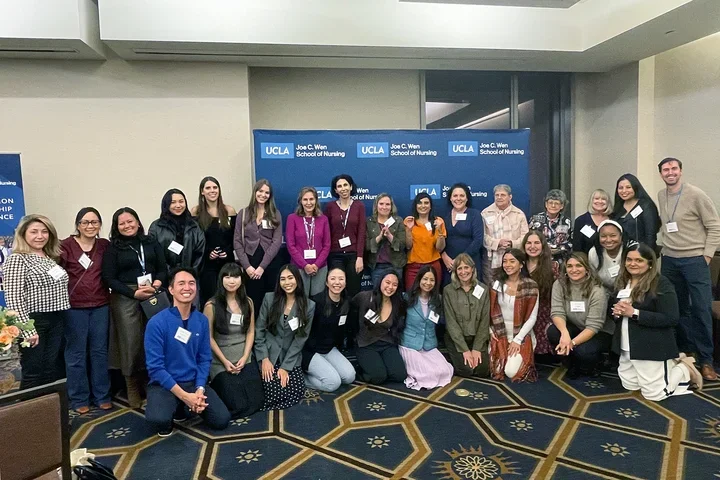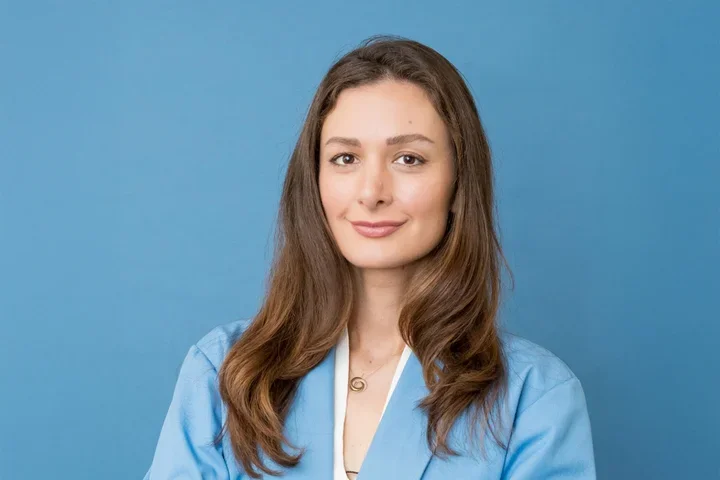The Art of Nursing
Class project uses art to explore mental health
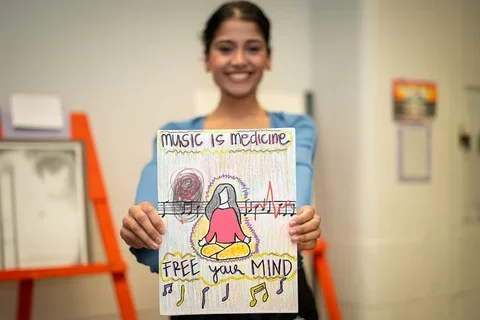
The mixed media oil on canvas, entitled Zolofting, included a pill container, disassembled pill capsules and an MRI image. The accompanying description discussed how the anti-depressant Zoloft and therapy helped the artist overcome depression. A pencil drawing of a blue jay came with an explanation from the illustrator noting, “Being in this program has made me rethink how I define success and has presented me with various scenarios where I’ve had to find greater peace by letting go of the illusion of perfectionism.”
These were two of the pieces conceived and created by UCLA School of Nursing MSN students as part of their Mental Health, Mental Illness and Psychiatric Nursing course curriculum.
“This project is designed to let students express what’s going on internally and put it into an art form,” says Charlene Niemi, PhD, MSN, RN, PHN. Students may choose any medium to highlight a mental health issue affecting them, a family member or friend, or something they saw during their rotation in the Resnick Neuropsychiatric Hospital. The assignment includes writing a reflection explaining why they chose their particular medium and what the project means to them.

This year’s MECN student projects included paintings, drawings, collages, origami and three-dimensional works. A plastic skeleton in chains and holding a vodka bottle represented “the relentless grip of addiction” along with “a glimmer of hope for redemption.” Caution: Do Not Open comprised a collection of overlapping boxes wrapped in plain white paper and bearing labels including, “Poverty,” “Eldest child first generation pressure,” “Family alcoholism” and “Parental abandonment.” The artist said the piece reflected the “compartmentalization and suppression of trauma, my own maladaptive coping mechanisms.”
“Reading the reflections makes you more sympathetic to what our students go through,” says Elizabeth Yzquierdo, MPH, EdD, Associate Dean, Student Affairs. “There’s a lot of trauma they otherwise may not have shared.”
Dr. Niemi, who comes from a family of artists, has required the project for the past three years. Students may choose to include their names with their creations or remain anonymous except to their professor.
“This project allows the cohort to become closer. They hear each other’s struggles,” she says. “We talk about the stigma of mental illness, family perceptions, family struggles and cultural differences related to mental illness and mental health.”
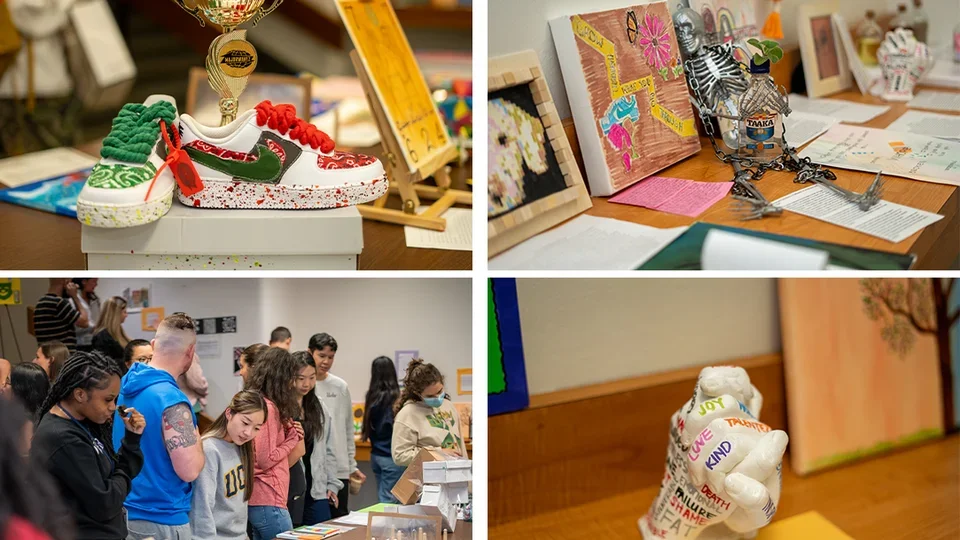
Dr. Niemi displays the projects in a makeshift gallery in the lobby of the Audrienne H. Mosely Auditorium in the School of Nursing. At the gallery opening in August, class members gathered to view one another’s work. Afterward, they discussed the projects in a session led by Dr. Niemi. Those who wanted to share with the group were invited to do so. The gallery remained up for a week so other nursing students, staff and faculty could view it.
“Most students say they’re not artistic, but then I’m amazed at their creativity,” says Dr. Niemi. One student created a game board of life experiences where the player rolls a dice and moves according to events along the path. Examples included “You are born into an abusive house. Move back one space” and “You get into your dream college. Move up three spaces.”
Another student showed a photograph of herself and her father, both smiling. An illustration surrounding the photo showed the two with pained expressions. The reflection noted that her father suffers from severe depression and the photo captured a rare moment of happiness.
David Yassai Gonzalez said the assignment prompted him to think more symbolically and artistically during his psychiatric rotation. “It was interesting taking something from a clinical perspective and incorporating it into something visual,” he said. Inspired by the image of a patient at the Resnick Neuropsychiatric Hospital suffering from depression, Yassai Gonzalez created a watercolor and ink image entitled View from the 4th Floor Deck. It shows the patient sitting on a bench where “gray and dull buildings [of Westwood] tower over him, serving as a visual metaphor for the overpowering and consuming suffering.” The patient had limited English and no family in the country, Yassai Gonzalez explained, and he realized those two factors had a doubly isolating effect on the patient.
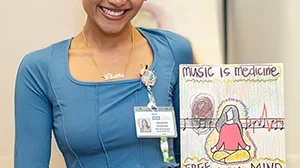
He felt especially pained because he shares the same Persian culture as the patient but does not speak the language well enough to converse in a psychiatric setting. Yassai Gonzales said the experience prompted him to consider learning to speak Farsi more fluently.
While initially intimidated by the breadth and lack of rubrics for the assignment, Vishakha Bhushan came to appreciate the opportunity to “dive deep into our personal lived experiences” and give others a glance at those experiences. Additionally, the activity helped her overcome the fear of being judged, she said. Her project, a likeness of a woman meditating while listening to music, shows the woman’s thoughts as a tangled mess. With the intervention of music, the tangled lines transform into a relaxed heartbeat. Entitled Music is Medicine the piece reflects how music can serve as a mindfulness practice to reduce anxiety and stress.
“I practice that with my patients during clinicals, but hadn’t thought of practicing it myself,” she said. Although Bhushan was drawn to psychology and neuroscience, she had difficulty selecting a specialty. She said her psychiatry rotation enabled her to “recognize the individual behind the disorder” and this class helped her learn “how to forge a relationship with the patient.” Now Bhushan thinks she’ll go into psychiatric nursing. “This experience crystallized my career choices.”

